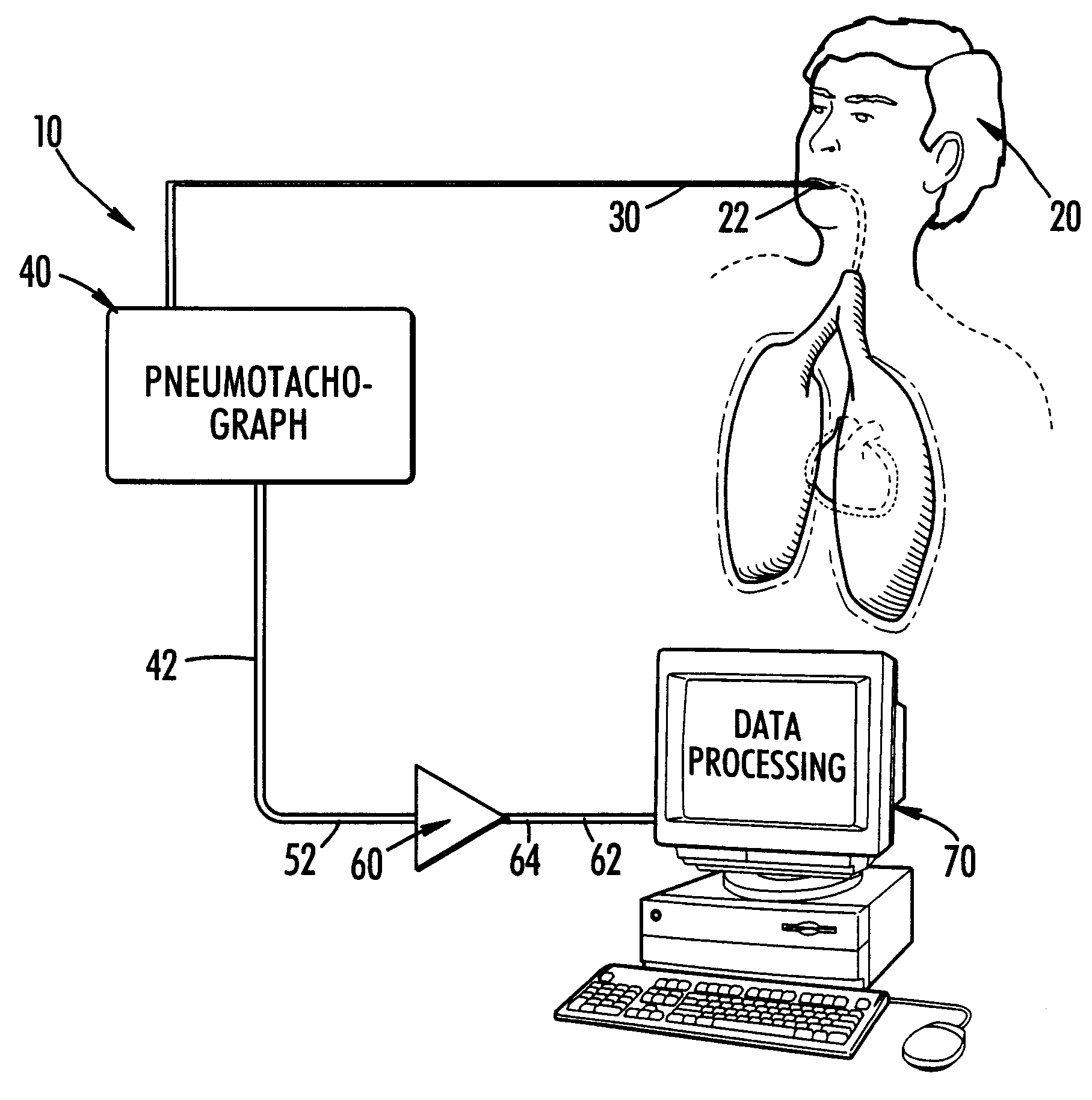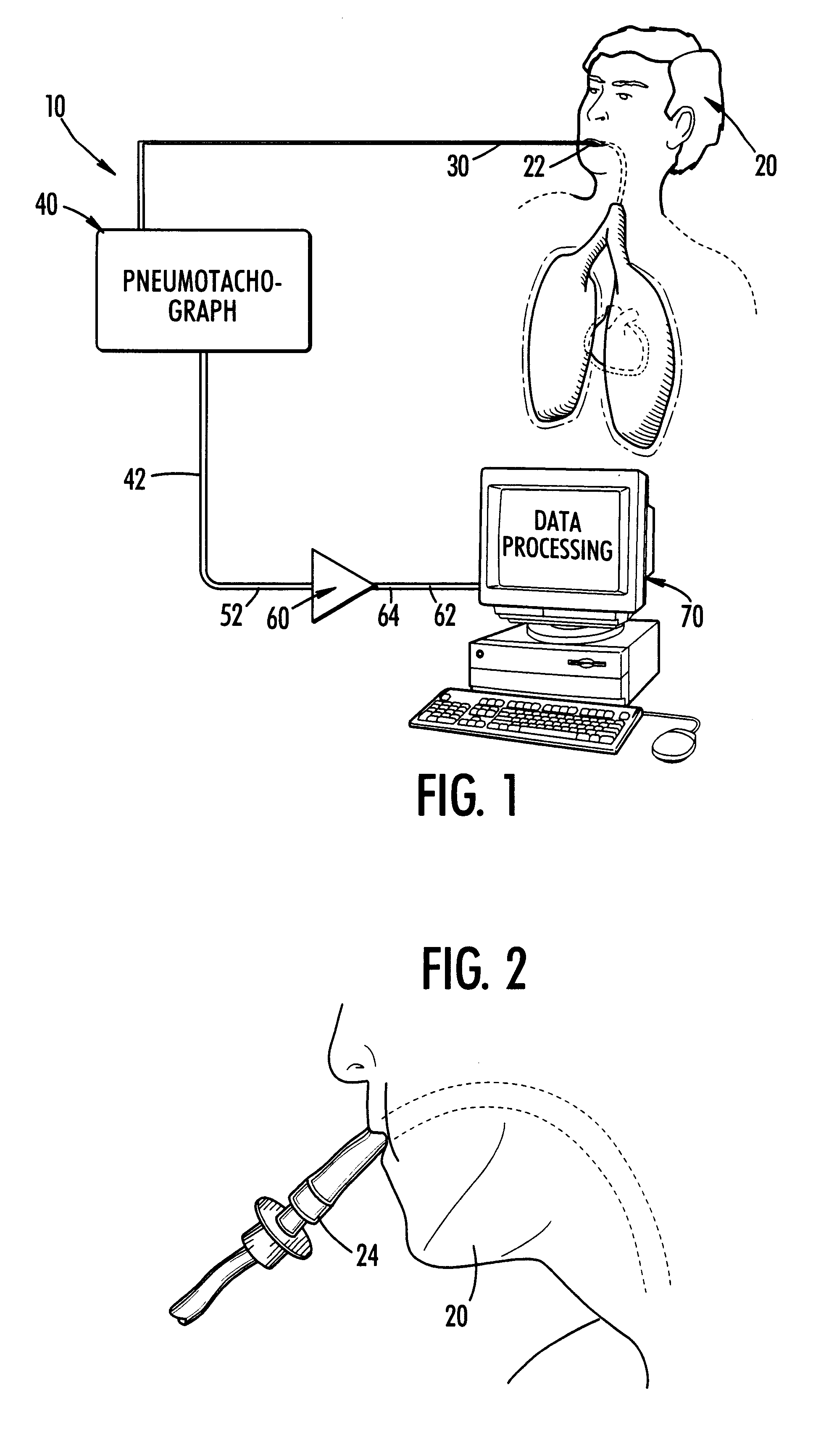Method and system for continuously monitoring cardiac output
- Summary
- Abstract
- Description
- Claims
- Application Information
AI Technical Summary
Benefits of technology
Problems solved by technology
Method used
Image
Examples
Embodiment Construction
The present invention is a method and apparatus for measuring heart output, which is the amount of blood pumped by a heart in a given period of time. The measurement, rather than being a direct measurement of blood flow from the heart, is of air flow in the throat based on the theory that the beating heart influences that air flow by pressing on the lungs.
The heart lies inside the airtight chest and is surrounded by the lungs. The heart is filled with blood, an incompressible fluid. When the left side of the heart beats, it ejects a certain quantity of blood which is called stroke volume (SV). Most of the SV leaving the left ventricle of the heart leaves the chest through the aorta. At a heart rate of 77 beats / min, SV in the average healthy adult is approximately 65 ml. The sudden ejection of blood from the closed chest decreases the total volume of the chest cavity.
The chest wall is compliant thus it will expand or contract when the pressure exerted by, or the volume of, its conten...
PUM
 Login to View More
Login to View More Abstract
Description
Claims
Application Information
 Login to View More
Login to View More - R&D
- Intellectual Property
- Life Sciences
- Materials
- Tech Scout
- Unparalleled Data Quality
- Higher Quality Content
- 60% Fewer Hallucinations
Browse by: Latest US Patents, China's latest patents, Technical Efficacy Thesaurus, Application Domain, Technology Topic, Popular Technical Reports.
© 2025 PatSnap. All rights reserved.Legal|Privacy policy|Modern Slavery Act Transparency Statement|Sitemap|About US| Contact US: help@patsnap.com


